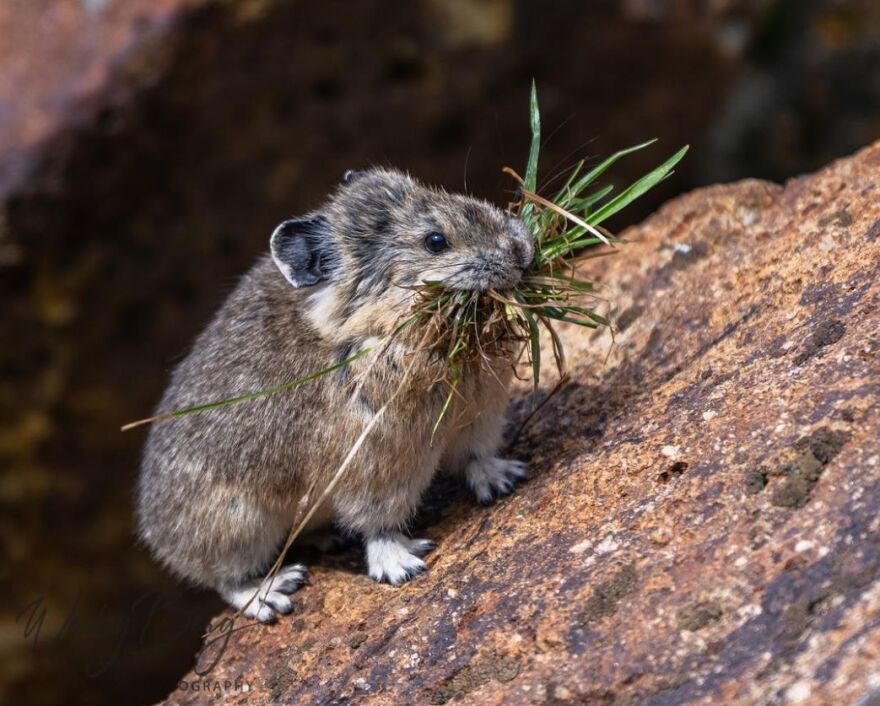The American pika is a small mammal that inhabits the highest elevations in the mountains of the West. Members of the rabbit family, pikas are about 7 inches long, with outsized ears, short legs and chunky furry bodies. They live only among talus slopes at or above treeline.
This diminutive animal is the focus of PikaNet, a citizen scientist project of the Mountain Studies Institute, based in Durango, Colorado.
PikaNet trains volunteers to look for pikas at five sites in the San Juan Mountains of southwest Colorado. They may spot the animals themselves, darting among the boulders, busily gathering grasses and flowers in summer. Or, they may more often hear their distinctive sharp "eeekk" call before they see them. Volunteers also observe other evidence of their presence, such as scat and the telltale “hay piles” stashed at den openings.
Heat is one of the biggest threats to pikas. Temperatures in the high 70s lasting even a short time can cause heat stroke. Plus, they need the insulation of snow cover at their dens in winter.
Because of their lifestyle and habitat requirements, pikas are an indicator species of the impact of a warming climate. If it gets much warmer, they can’t go any higher to escape the heat. Some studies show they’ve already lost a third of their habitat in other parts of the West.
PikaNet will add a decade’s worth of data to that of other partners, telling a fuller story of how these unique alpine animals are faring.
This Earth Note was written by Rose Houk and produced by KNAU and the Sustainable Communities Program at Northern Arizona University.








